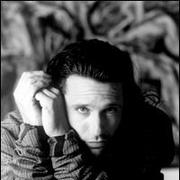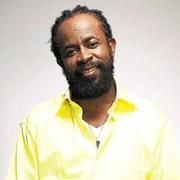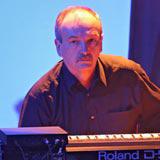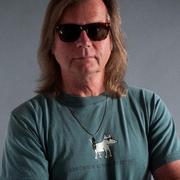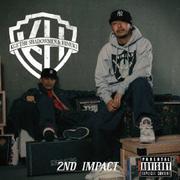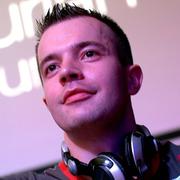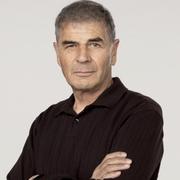Robert Miles
| 基本信息 | |||
|---|---|---|---|
| 姓名 | Robert Miles | 别名 | 暂无 |
| 国籍 | 瑞典 | 出生地 | 瑞典 |
| 语言 | 英语 | 性别 | 男 |
| 生日 | 星座 | ||
| 身高 | 体重 | ||
Robert Miles 的传奇始于 1994 年发行的单曲《Children》(后来收录于非常出名的合集《Voyage》),这首在4米见方的车库中写就的处女作反映的是他在看完从前南地区执行完人道主义任务归来的父亲所拍的照片后,对其中儿童成为战争的牺牲品最直接,最具代表性的感受。
Robert Miles 的专辑呈现的是一种梦幻的氛围。在加入了女声之后,更使专辑增色不少。他的音乐的特色是没有强烈的节拍,有别于 Euro Beat 的感觉,而作为一名钢琴师,他更愿意通过键盘来实现他煽情的效果。这也是他能取得成功的重要原因之一。
Italian dream-house DJ Robert Miles rose from relative obscurity to score one of the biggest and most unlikely hits of 1996 with his monster single "Children." Born Roberto Concina in 1969 to a military family stationed in Switzerland, he did not return to Italian soil until the age of ten, settling in the town of Fagagna. Raised primarily on the classic American soul sound of the 1970s, Miles began studying piano as a teen, and at 13 began DJing local house parties. By the late '80s he was regularly spinning hardcore trance sets at Venice area clubs under the name Robert Milani, eventually adopting the name Miles as symbolic of the musical journey awaiting him. In time, he assembled a basic studio system comprising a sampler, mixer, keyboard, and 32-track digital board, accepting production work with the Italian label Metromaxx.
"Children" was inspired by a collection of photos taken by Miles' father while stationed in war-torn Yugoslavia; the DJ was equally disturbed by the growing number of deaths plaguing the Italian rave community, and he soon began work on "Children," a simple, piano-driven instrumental anthem produced at a cost of only £150. Originally issued in 1994, the single slowly emerged as an international blockbuster, topping charts in Germany, France, Holland, and Belgium on its way to becoming the biggest European single of 1996; it also fell just shy of reaching the Top 20 on the American pop charts.
After its follow-up, "Fable," Miles issued his debut LP, Dreamland, with its Dreamland II remix companion appearing a short time later. He resurfaced in 1997 with 23 AM. Miles' next full-length, Organik, arrived in 2001 and featured appearances by Bill Laswell, Trilok Gurtu, and Talvin Singh. The double-disc set Organik Remixes was issued two years later, followed by a collaborative release with Gurtu in 2004.
Robert Miles 的专辑呈现的是一种梦幻的氛围。在加入了女声之后,更使专辑增色不少。他的音乐的特色是没有强烈的节拍,有别于 Euro Beat 的感觉,而作为一名钢琴师,他更愿意通过键盘来实现他煽情的效果。这也是他能取得成功的重要原因之一。
Italian dream-house DJ Robert Miles rose from relative obscurity to score one of the biggest and most unlikely hits of 1996 with his monster single "Children." Born Roberto Concina in 1969 to a military family stationed in Switzerland, he did not return to Italian soil until the age of ten, settling in the town of Fagagna. Raised primarily on the classic American soul sound of the 1970s, Miles began studying piano as a teen, and at 13 began DJing local house parties. By the late '80s he was regularly spinning hardcore trance sets at Venice area clubs under the name Robert Milani, eventually adopting the name Miles as symbolic of the musical journey awaiting him. In time, he assembled a basic studio system comprising a sampler, mixer, keyboard, and 32-track digital board, accepting production work with the Italian label Metromaxx.
"Children" was inspired by a collection of photos taken by Miles' father while stationed in war-torn Yugoslavia; the DJ was equally disturbed by the growing number of deaths plaguing the Italian rave community, and he soon began work on "Children," a simple, piano-driven instrumental anthem produced at a cost of only £150. Originally issued in 1994, the single slowly emerged as an international blockbuster, topping charts in Germany, France, Holland, and Belgium on its way to becoming the biggest European single of 1996; it also fell just shy of reaching the Top 20 on the American pop charts.
After its follow-up, "Fable," Miles issued his debut LP, Dreamland, with its Dreamland II remix companion appearing a short time later. He resurfaced in 1997 with 23 AM. Miles' next full-length, Organik, arrived in 2001 and featured appearances by Bill Laswell, Trilok Gurtu, and Talvin Singh. The double-disc set Organik Remixes was issued two years later, followed by a collaborative release with Gurtu in 2004.
 加载评论内容,请稍等......
加载评论内容,请稍等......

